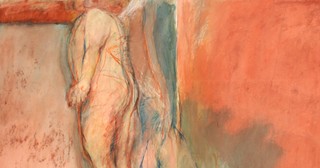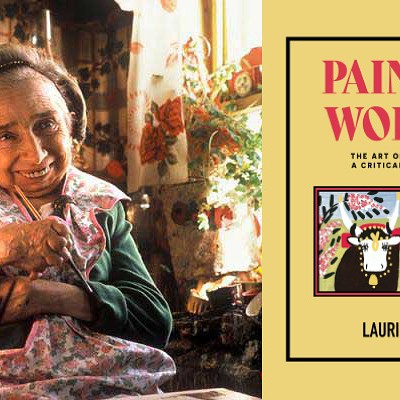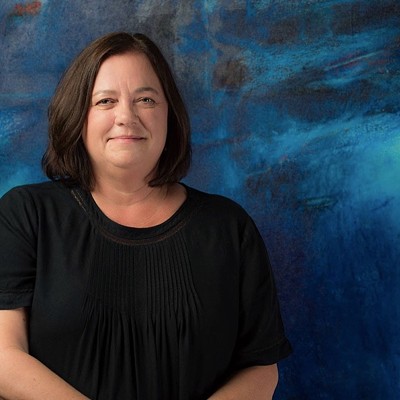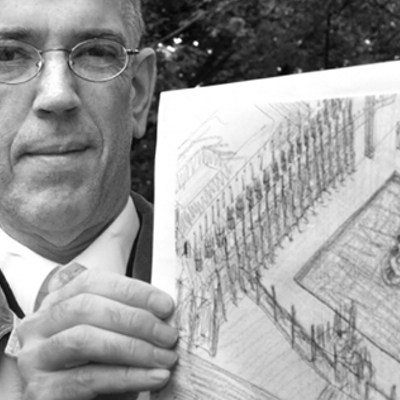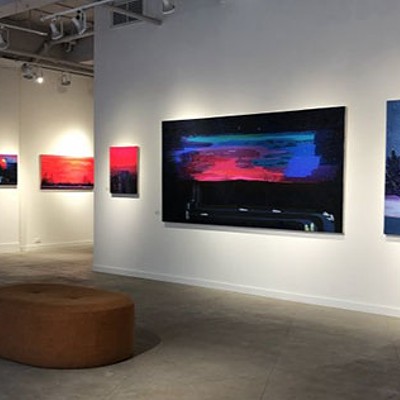Emeren Garcia pictures Betty Goodwin at a defining moment. "She had this very grand studio and she would create her own installations there," says the head of touring exhibitions for the Musée d'art contemporain de Montréal.
Goodwin, the multidisciplinary Montreal artist who passed away in 2008 at 85, worked with many different materials and in many different forms, but kept clearly in mind how every part of her body of work fit together, according to Garcia.
"We're creating situations as much as Betty Goodwin would be doing herself," she says, walking over to an example in Dalhousie Art Gallery, the first venue in the three-year tour schedule for Betty Goodwin: Darkness and Memory.
Two works face each other across the space. The steel sculpture "River Bed," from 1977, rests on the floor by one wall. Hanging on the wall opposite, "Beyond Chaos, No. 7," from 1998, is created with oil stick, charcoal and Chronaflex print on translucent Mylar. "It goes from the ground to the sky, those two extremes," says Garcia.
The duality of absence and presence, a constant in Goodwin's work, creates tension within each piece. The chute-like sculptural form has no water. The river has run dry, but the rushing sound and sight is remembered. The cloud formation obscures the sun. The clouds are backlit, but the sun's not visible. Goodwin overlays a swirl, a frequent motif, as though filling in the solar presence.
After Halifax, the exhibition travels to cities including Oshawa, Sherbrooke, St. John's, Saskatoon and Abbotsford, BC. The itinerary reflects a clear, concerted effort on the part of all the participating institutions to introduce Goodwin's vast practice to more people, says Garcia. Each venue is laid out differently, but the arrangement---the selection and sequence--- of works as determined by the organizing curator (in this case, Josée Bélisle) has to be followed on a spectrum that runs from strict adherence to flexibility.
Dalhousie's director/curator Peter Dykhuis credits Bélisle for staying on the flexible side. For that matter, Garcia praises the work of Dykhuis and his staff, nodding to registrar/preparator Michele Gallant and her installation team who are hard at work hanging one of Goodwin's tarpaulin pieces.
"I have never seen something that looked more like it was always meant to be there," Dykhuis says of the tarp and its close proximity to concrete columns in the gallery. "That concrete has a certain brutality to it," he says. When visitors enter the space, they see it in its perfectly proportioned place.
Torn, stitched and worn, the found tarps arise from Goodwin's immersion in memory and history, particularly World War II. Destruction on a large scale often attends personal suffering and loss in her work, says Dykhuis. For Garcia the tarps evoke "those trucks that were used for deportations" of Jews. Goodwin's parents were Holocaust survivors.
Though he thought he knew and formed his conclusions about Goodwin's work, Dykhuis has re-examined the tarps, looking for where and how the artist may have "inscribed" her hand. "What I'm learning from this whole exhibition is whether she was working with steel, or the found tarps or drawing on vellum she has this incredible handle on the material, how to make it appropriate for what she was after," says Dykhuis. "You can literally go through the exhibition from the grand architectural scale down to the human scale."
Betty Goodwin: Darkness and Memory opens Thursday, January 14 at 8pm, running to March 6, Dalhousie Art Gallery, 6101 University Avenue

